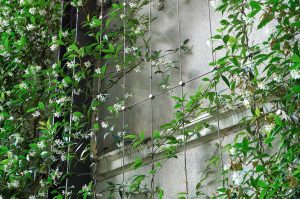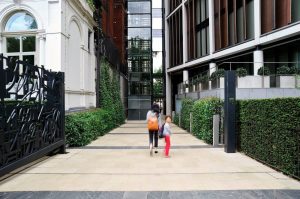Designing a green facade for a heritage building can be a much more complex job than usual. For a start, an older building’s set of drawings may be inaccurate or outdated, and may not currently match the actual building on site.
This makes a visit to the site for an inspection essential. The site inspection will need to be very thorough to determine the condition of the building, and to do a detailed check of the walls to determine how much weight they can bear.
Some older buildings for example have walls that are several layers thick, and only a thorough physical inspection will be able to determine this. In a brick building it may also be important to check the state of the mortar, as it could have deteriorated over the years.
Here are some other considerations for green facades on heritage buildings.
Load bearing capacity
While a green facade is lighter than a green wall, it’s important to recognise that old bricks and sandstone usually cannot take too much weight.
The weight of all components after construction (dead load), will need to be determined. This includes the weight of the frame as well as that of the plants selected, which varies from one species to another.
Most buildings are also not designed to have frames and cables pulling on them. This means that especially with an older building, it will be essential to design the facade in a way that the building will be able to cope with.

Planning permits and local laws
It’s always important with any building changes to check with the local council regarding permits and laws.
With a heritage building however, the site may be affected by a heritage planning overlay. This may apply to design and development, and / or to neighbourhood character if the building is in a heritage conservation area.
If the building is heritage listed it has historical significance, and any changes may require approval from the local heritage authority.
Other considerations
Other things to consider include access for vehicles and equipment, ensuring safety for passers-by during construction, and making sure that the vegetation does not protrude into a public area.
It’s also important to factor in the local climate conditions, and how the aspect of the building will affect the proposed facade. If the wall you’re proposing to use for the green facade is predominantly in full sun for example, this will determine what plants can be used.
If you are considering installing a green facade on a heritage building, make sure to book a site inspection for a thorough check of the property before proceeding.





































